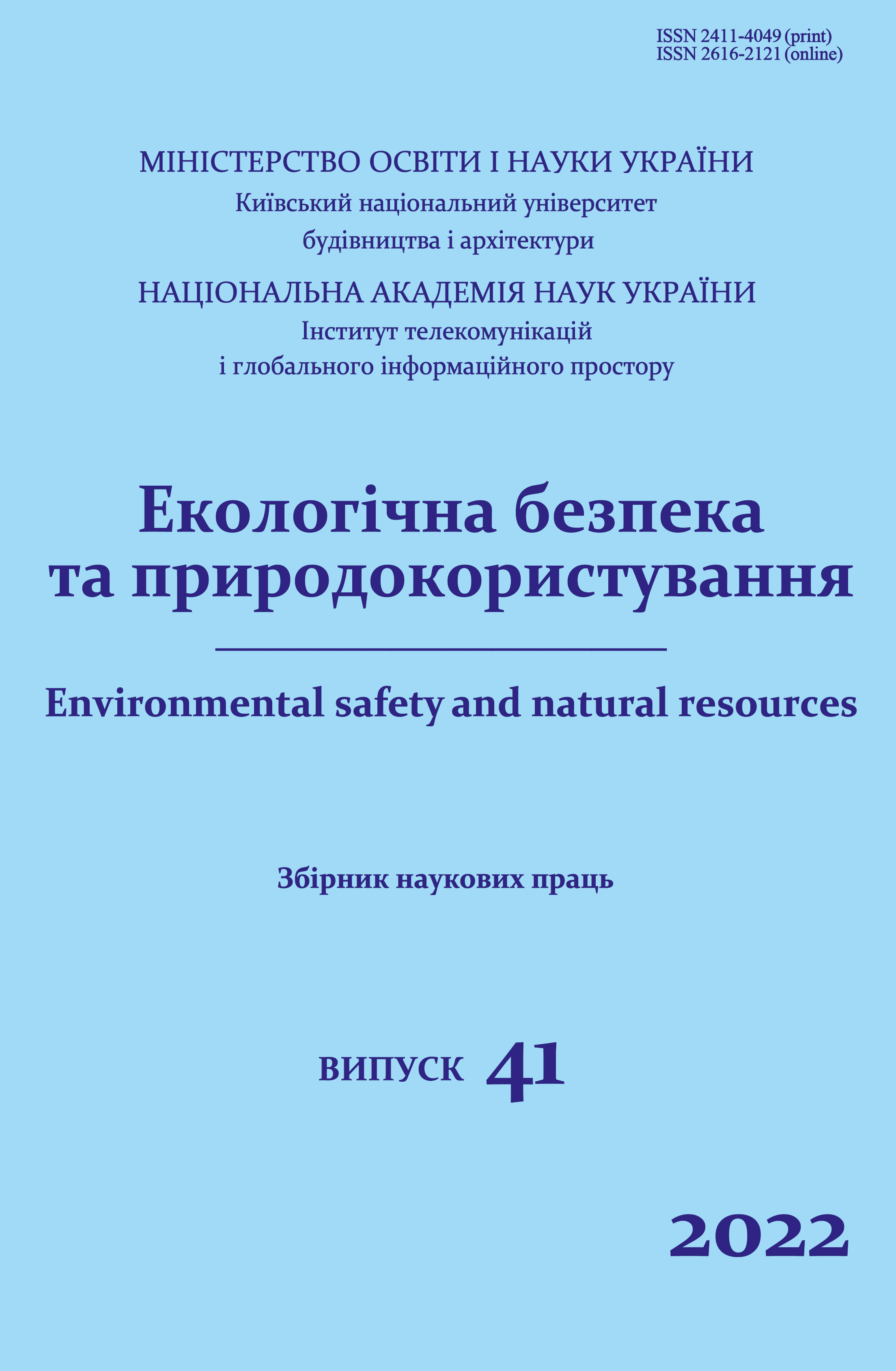Assessment of the environmental status of the water object by hydrochemical indicators
DOI:
https://doi.org/10.32347/2411-4049.2022.1.18-30Keywords:
assessment of water quality, the environmental index, the index of pollution components in the salt composition, the tropho-saprobiological index, the index of specific indices of toxic and radiation actionAbstract
The problem of surface water is one of the key challenges of humanity. In accordance with the goals of research and analysis of the environmental status of water bodies are of great practical importance, as their condition further affects the quality of drinking water. The purpose of the work is to assess the environmental status of the water body. The originality of the obtained results is a comprehensive assessment based on the analysis of time monitoring data on the ecological status of water of the water body, taking into account the weighting factors of pollution indices. The study of the ecological state was carried out taking into account the integrated hydrochemical indicators. Microsoft Excel software was used to conduct the study. Google Maps was used to find places on maps and build the maps you needed to work. Microsoft Excel was used to perform calculations and build graphics. The ecological status of a water body is determined on the basis of pollution index calculations. The method of assessing the ecological status of surface waters by relevant categories has been improved through the use of weights. The assessment method is universal and can be used to study the ecological status of any water body. However, the selection of hydrochemical indicators took into account only the content of major pollutants, namely chlorides, sulfates, phosphates, suspended solids, petroleum products, compounds of copper and zinc violated. The obtained research results can be used in the development of water management plans and measures to improve their condition.
References
Chugai, A., & Safranov, T. (2020). Assessment of Technogenic Loading on the Surface Water Bodies of the Separate Regions of the North-Western Black Sea. Journal of Ecological Engineering, 21(5), 197–201.
Bezsonov, Ye., Mitryasova, O., Smyrnov, V., & Smyrnova, S. (2017). Influence of the South-Ukraine electric power producing complex on the ecological condition of the Southern Bug River. Eastern-European Journal of Enterprise Technologies, 4/10(88), 20–28.
Varady, R.G., Albrecht, T.R., Staddon, C., Gerlak, A.K., & Zuniga-Teran, A.A. (2021). The Water Security Discourse and Its Main Actors. Handbook of Water Resources Management: Discourses, Concepts and Examples, 215–252.
Bakker, K. (2018). The business of water. In: Conca K., Weinthal E. (eds). The Oxford handbook of water politics and policy. Oxford University Press, New York, 407–429.
Mitryasova, O., & Pohrebennyk, V. (2020). Hydrochemical Indicators of Water System Analysis as Factors of the Environmental Quality State. Sustainable Production: Novel Trends in Energy, Environment and Material Systems. Studies in Systems, Decision and Control In: Królczyk G., Wzorek M., Król A., Kochan O., Su J., Kacprzyk J. (eds), Vol. 198. Springer, Cham., 91−104.
Khilchevskyi, V.K. (Ed.). (2009). Water resources and river water quality of the Southern Bug basin. Kyiv: Nika Center [In Ukrainian].
Klymenko, V.H. (2010). Hydrology of Ukraine: Textbook for students. Kharkiv: KhNU named after V.N. Karazina [In Ukrainian].
Lykhovyd, P.V., & Kozlenko, Ye.V. (2018). Assessment and forecast of water quality in the River Ingulets irrigation system. Ukrainian Journal of Ecology, 8(1), 350–355.
Vasenko, O.H., Vernychenko-Tsvetkov, D.Yu., Kovalenko M.S. et al. (2008). Ecological assessment of the state of surface waters of Ukraine taking into account regional hydrochemical features. Kyiv: UkrNDIEP [In Ukrainian].
Hrytsenko, A.V., Vasenko, O.H., Vernichenko H.A. et al. (2012). Methods of ecological assessment of surface water quality by relevant categories. Kharkiv: UkrNDIEP [In Ukrainian].
Rybalova, O.V. (2011). Complex approach to determining the ecological status of small river basins. Problems of environmental protection and man-made safety, ХХХІІІ, 88–97 [In Ukrainian].
Mitryasova, О., Pohrebennyk, V., & Kardasz, P. (2018). Hydrochemical Aspects of Surface Water Quality Assessment. In 18th International Multidisciplinary Scientific Geoconference SGEM 2018, Albena, Bulgaria. 30 June – 9 July 2018, 5.2. (18), 513−520.
Methods of ecological assessment of water bodies. Retrieved from http://h.ua/atr.php?id=5722.
European Communities WFD CIS Common Implementation Strategy for the Water Framewormk Directive (2000/60/EC). (2003). Guidance document № 10 River and lakes – Typology, reference conditions and classification systems. Luxembourg.
South Bug Basin Water Resources Management. Retrieved from http://www.vodhoz.com.ua
Reporting data on the state of the Southern Bug and the Bug estuary for 2002-2020. (2020). South Bug basin management of water resources in the Mykolayiv area. Mykolayiv.
Regional report on the state of the environment in the Mykolayiv area in 2020. (2020). The South-Bug basin management of water resources in the Mykolayiv area. Mykolayiv.
Downloads
Published
How to Cite
Issue
Section
License
Copyright (c) 2022 Mitryasova O., Pohrebennyk V., Shybanova A., Dzhumelia E.

This work is licensed under a Creative Commons Attribution 4.0 International License.
The journal «Environmental safety and natural resources» works under Creative Commons Attribution 4.0 International (CC BY 4.0).
The licensing policy is compatible with the overwhelming majority of open access and archiving policies.

